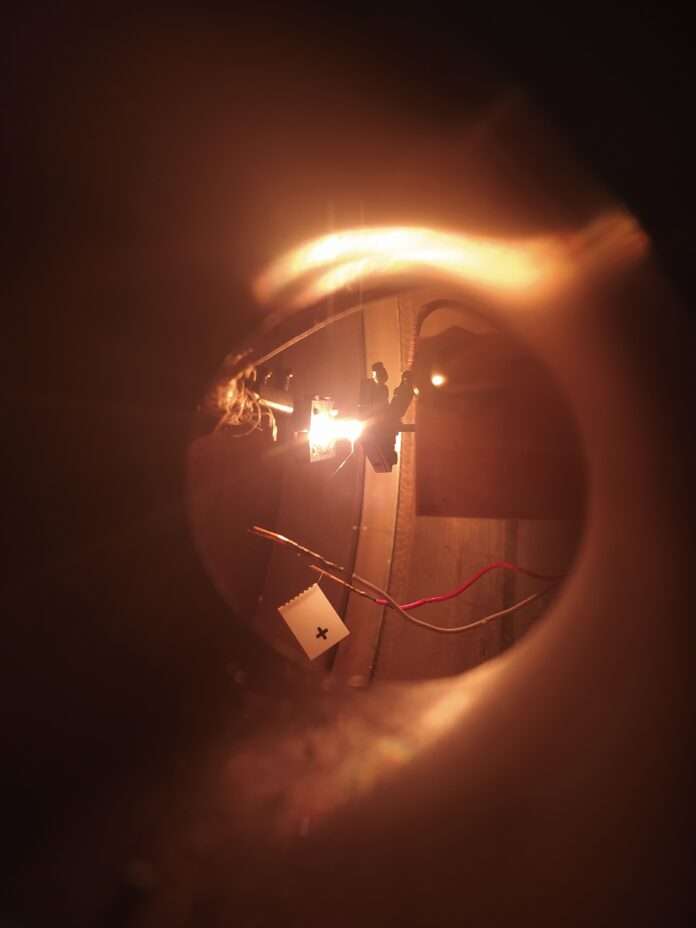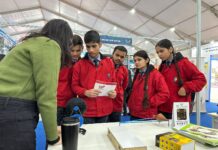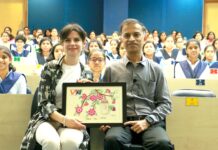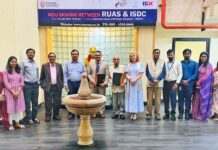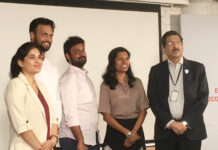Reaction instrumental in plastics and natural gas industries observed during experiment in synchrotron
July 27, 2023: Now, here is a strange thing. One of the most important drivers of perhaps the largest industrial chemical reaction has never been observed in over 100 years of study. Reactions of three related molecules, ethane, ethyl, and ethylene are the key factors in producing hundreds of millions of tons of plastic and other industrially important chemicals annually. These chemical reactions are central to both producing plastics and the combustion of natural gas, yet researchers have only been able to theorize about how they work by analyzing final products, because most experiments are unable to observe short-lived chemical intermediates, despite their importance in driving such reactions.
Now, Ben-Gurion University of the Negev scientists have detected the last unobserved intermediate in the ethane pyrolysis reaction for the first time. With these findings, those reactions could become more efficient – producing more products with less material, byproducts, pollution, and energy.
Their findings, with their US and Swiss colleagues, were published recently in the prestigious journal Angewandte Chemie.

“Observing this intermediate is the beginning of the path to making associated processes cleaner and more efficient, an important factor in industries such as plastics and natural gas,” says corresponding author Dr. Josh Baraban. His Ph.D. student Nadav Genossar-Dan led the theoretical and practical aspects of the experiment, originally designed to target ethylidene, an elusive radical closely related to ethane and ethyl.
“At first, I didn’t know what we had done,” admits Genossar-Dan, “it was only when I was looking at the data we collected that I realized we had managed to observe this important chemical.
“Going back through the literature since the 1930s, I couldn’t find a single researcher who had managed to observe it,” he added.
Genossar-Dan designed a flash pyrolysis experiment – heating the molecule until it cracks apart, for very short times (a tenth of a millisecond). But he needed a synchrotron (an unusual tool based on an electron accelerator of which there are only a few dozen in the entire world), which can be used to produce vacuum ultraviolet light. He managed to book a one-week experiment in the Swiss Light Source synchrotron, and then worked around the clock with three of his group members and the hosting scientist to run the experiments. Because they are so rare, synchrotrons run 24/7 and researchers must apply for permission to use them.
Also Read: 8th JKLU Laureate Award goes to Padma Vibhushan Dr. R. A. Mashelkar
Genossar-Dan’s modeling explained the experiments and the findings completely. Now it is up to others to follow them. In the end, the demanding work, both designing and running the experiment, paid off as they made chemistry history.
Additional researchers included other PhD students from the group: Sharona Atlas (modeling), Dana Fux, Shani Har Lavan, Uri Zamir (participating in the experiment), Dr. Thanh Lam Nguyen (University of Florida, assistance with modeling), Dr. Patrick Hemberger (Swiss Light Source, participating in the experiment).
The research was supported by the European Research Council (ERC) under the European Union’s Horizon 2020 research and innovation programme (grant agreement No. 848668) and from the Israel Science Foundation (ISF), grant No. 194/20. Nadav Genossar-Dan acknowledges the VATAT scholarship for Ph.D. students in quantum science and technology.
About Ben-Gurion University of the Negev:
Ben-Gurion University of the Negev embraces the endless potential we have as individuals and as a commonality to adapt and to thrive in changing environments. Inspired by our location in the desert, we aim to discover, to create, and to develop solutions to dynamic challenges, to pose questions that have yet to be asked, and to push beyond the boundaries of the commonly accepted and possible.
We are proud to be a central force for inclusion, diversity, and innovation in Israel, and we strive to extend the Negev’s potential and our entrepreneurial spirit throughout the world. For example, the multi-disciplinary School for Sustainability and Climate Change at BGU leverages over 50 years of expertise on living and thriving in the desert into scalable solutions for people everywhere.
At a glance:
20,000 students | 800 senior faculty | 3 campuses | 6 faculties: humanities & social sciences, health sciences, engineering sciences, natural sciences, business & management, and desert research
This year Educate yourself and develop your career with EasyShiksha.































